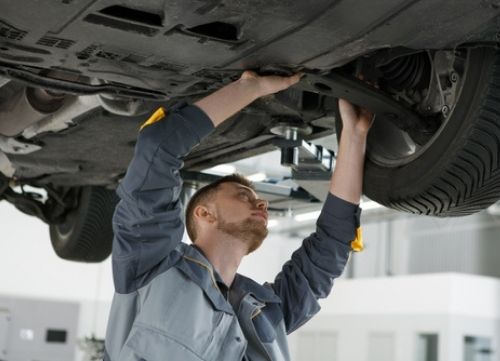
2022 is proving to be a year unlike any other in the vehicle world. Manufacturers currently estimate a 9-12 lead times for most vehicles, with some EV lead times slightly shorter at around six months. That lack of availability has also had a knock-on effect to vehicle prices, which remain consistently high in both the new and used markets.
Whichever way you look at it, this is a situation nobody in our industry has experienced before – at any part of the supply chain.
In this post, we’ll look at the challenges impacting vehicle availability and fleet pricing, and how our fleet services can help your business stay mobile in these tricky times.
It’s helpful to understand the current vehicle marketplace and the factors underpinning LGV, HGV and car availability.
The world lost around 11.3 million units of production in 2021, with the cost to global auto industry estimated at $210 billion (equivalent to over £161 billion). Much of that was down to the ongoing semiconductor chip shortage, with the automotive sector one of the hardest hit. (That’s perhaps no surprise, when you consider how many more electronic parts go into an average vehicle than your typical piece of consumer technology). With those vehicle availability shortages expected to extend into 2024, manufacturers are taking drastic measures to keep supply flowing.
As a result, there have already been many cases where manufacturers announce a 9-12 month wait time for a new model, then respond to the auto chip shortage by cancelling those orders nearer the expected delivery time. It’s an unprecedented situation, and one fleet services like ours are having to adapt to by offering extended leases on existing vehicle contracts.

The move towards extended contracts is however not without its own impacts, Older vehicles staying on the road longer means an increase in the number of services and repairs needed. For some brands, the war in Ukraine and the shift in factories has slowed down not just overall vehicle production, but also creation of the spare parts needed to make those repairs. Additionally, shipping issues caused by the war have also played a part in slowing down supply of parts. All of which adds to vehicle availability issues at the customer end.
Another knock-on effect has been an increased demand for courtesy cars to keep people mobile while those repairs take place. Unfortunately, the auto chip shortage means that stocks of company cars are at an all-time low. In some places fleet businesses are considering short-term rentals, or even purchasing second-hand vehicles, as a stop-gap. However, the pricing impacts have also extended to those markets, meaning in the few places where supply is present, those options are likely to be less cost effective than in previous years.
The current situation in Ukraine has seen a shift of location for vehicle manufacturing to alternative sites away from the conflict. This has also had an impact on vehicle availability. The good news is that the setup, contracting and tooling of these factories is happening as we speak, with specialist teams are working tirelessly to make that happen. However, it will take time for production to meet previous levels. Until the situation stabilises, this will be another issue affecting car availability.

The confluence of the auto chip shortage and Ukraine conflict, coupled with the longer-tail production backlog caused by factory closures during Covid lockdowns, has led to what truly is an unheard-of situation.
Indeed, we’ve penned this post because we really do feel it’s important that leasing customers have a full grasp of the challenges in the current vehicle market. In short, vehicle availability and fleet pricing aren’t what they used to be – and nobody in our industry is happy about it.
Thankfully, there are measures you can take if you’re in or approaching the final year of your rental contract.
Chief amongst these is planning ahead and talking to our expert team about your leasing and rental needs as early as possible. Where in previous years you might have considered doing that with three months until your contract was up, now we recommend doing so at least nine months in advance – ideally more.
As mentioned earlier in the post, we are in a position to offer short-term extensions to leases where possible – helping to mitigate car availability issues while you wait for your new vehicle to arrive.
Where that isn’t possible – or for instance, where a vehicle repair is impacting your ability to stay mobile – our team’s decades of combined experience, and long list of industry contacts, mean we’re as well placed as anyone to offer advice and guidance on potential alternatives; be they extensions, rentals, second-hand vehicle purchases, or even making the shift to electric vehicles earlier than you might have previously considered. This will also help you in considering budgeting factors, with fleet pricing likely to be higher than usual owing to the by the lack of vehicle availability worldwide.
During this difficult time for the entire automotive industry, we’re committed to being as open as possible with you about realistic timelines and the options you have available. Our fleet services will continue to support you wherever and whenever possible, striving to find solutions to help you to meet your mobility needs.
Call us on 0844 854 5100 or email CSalmon@sgfleet.com.